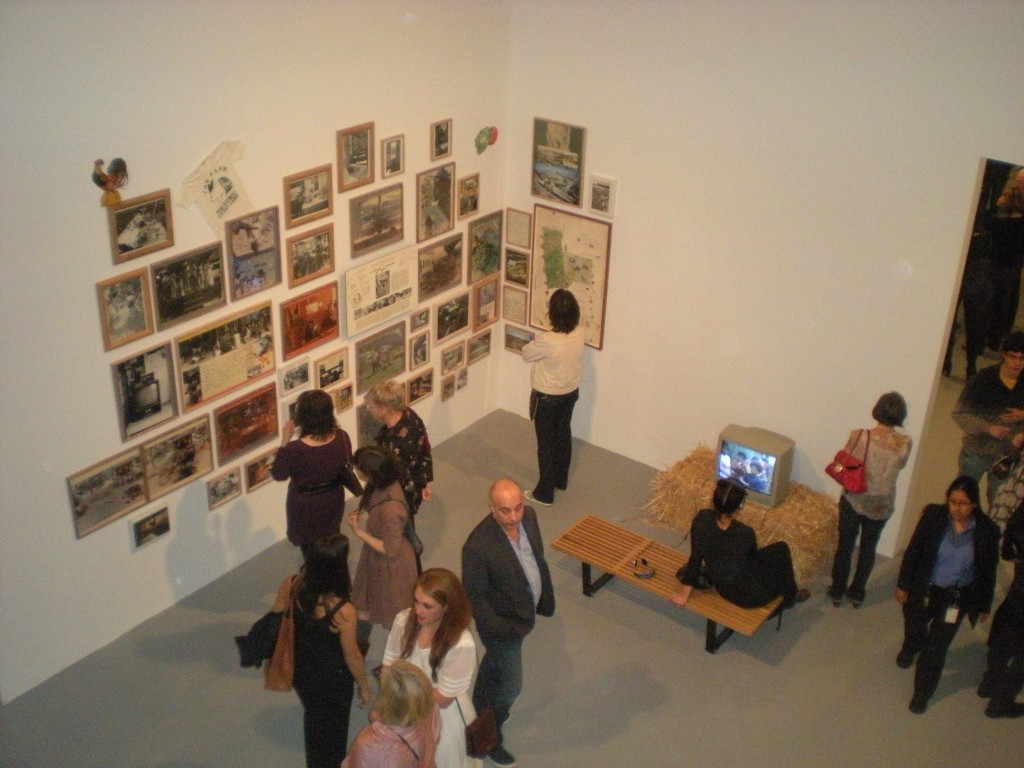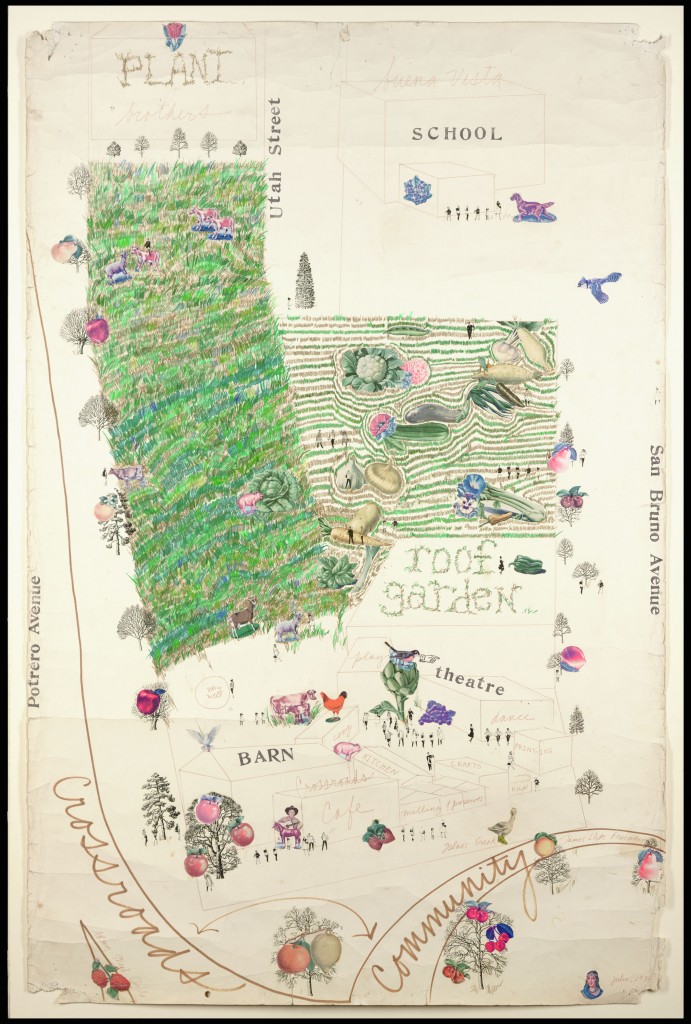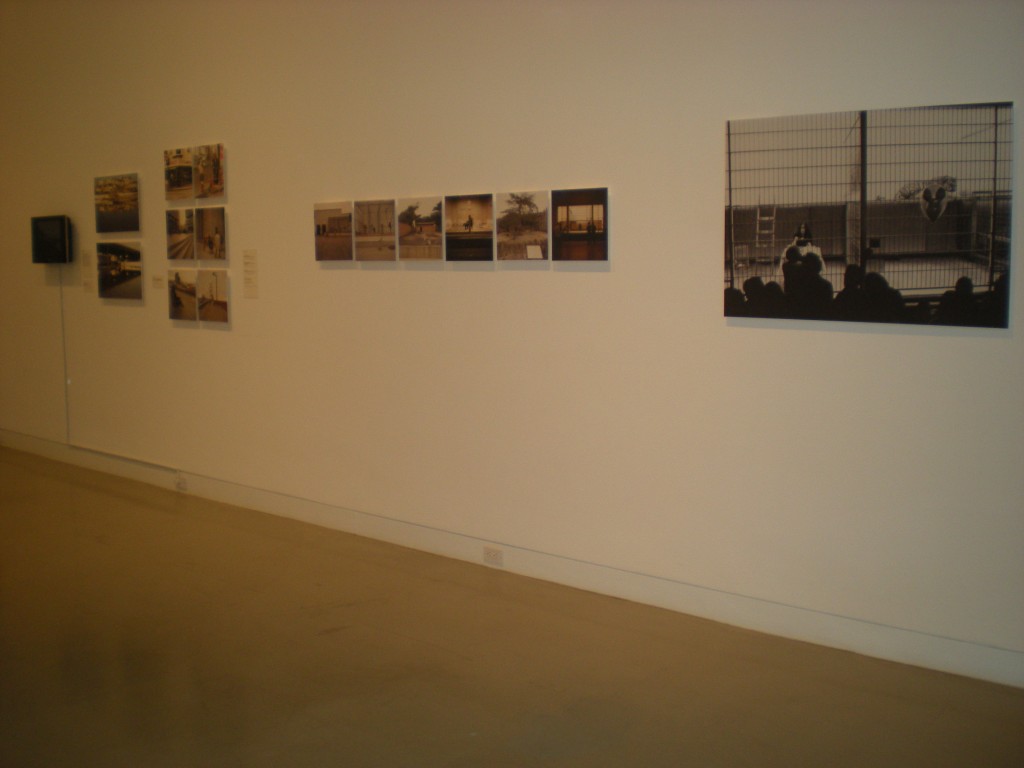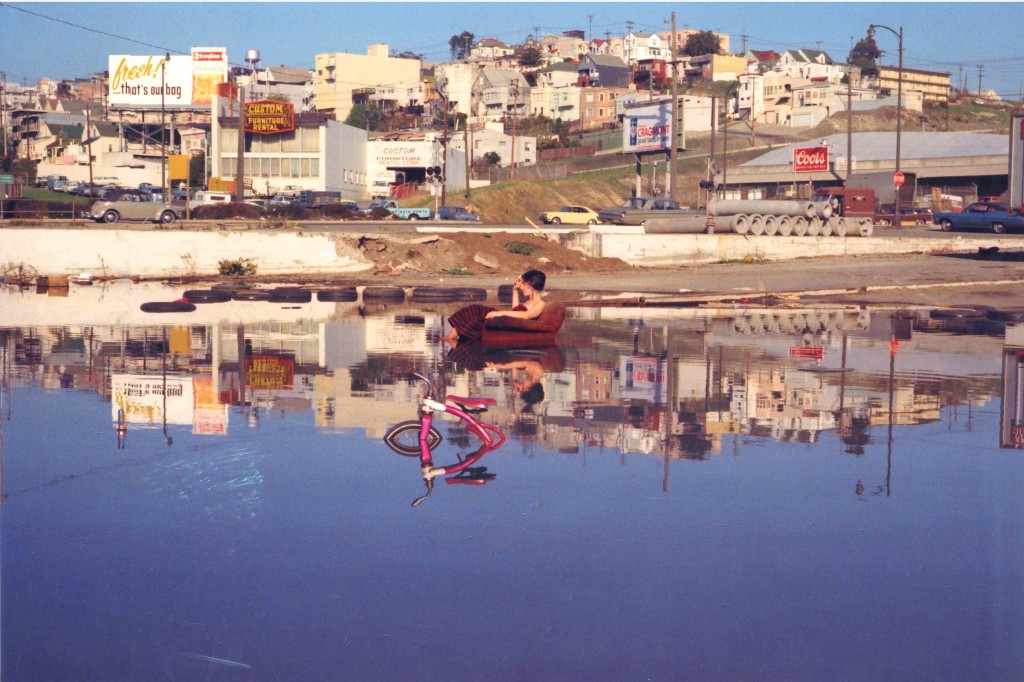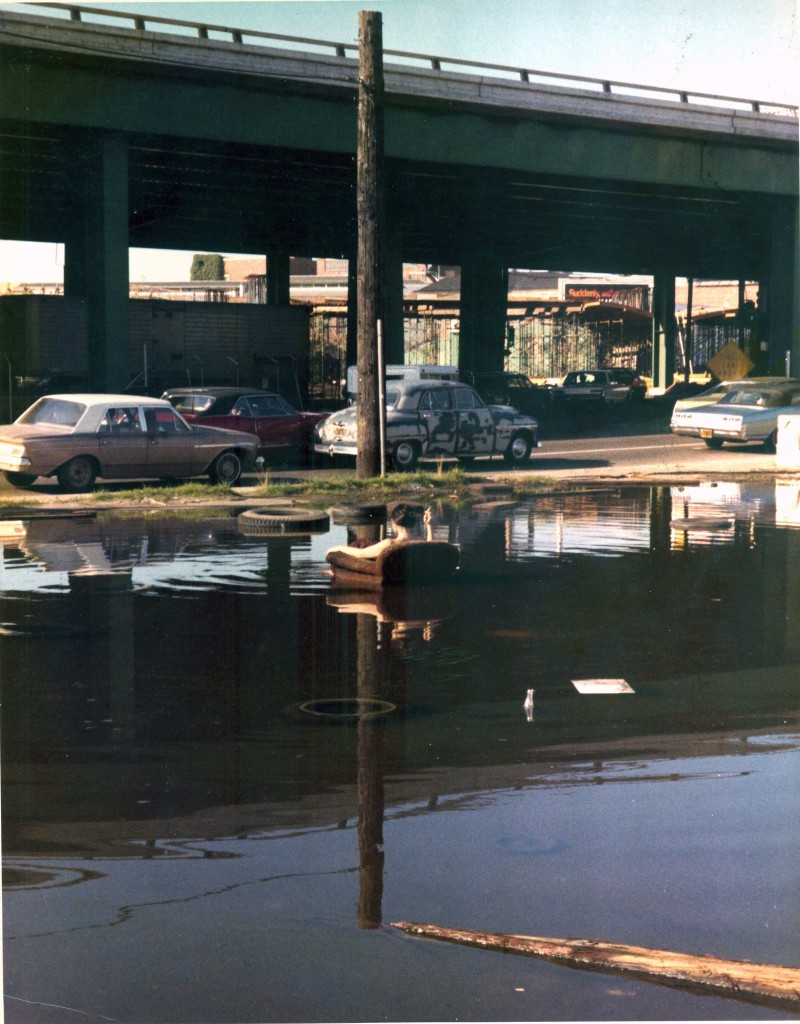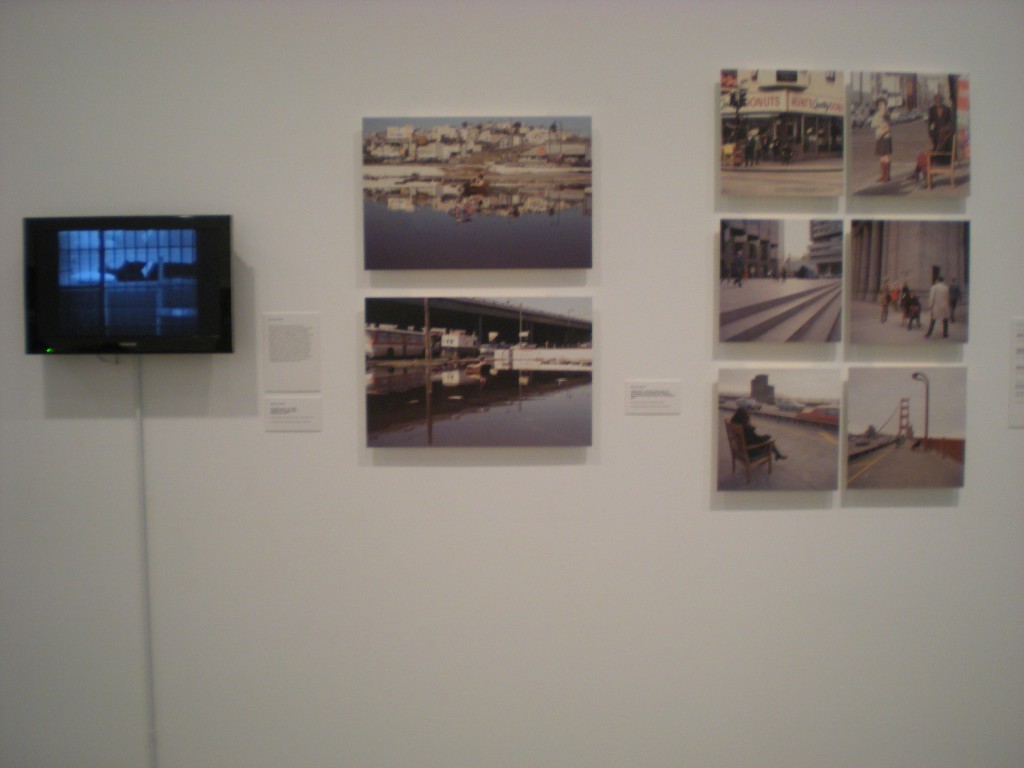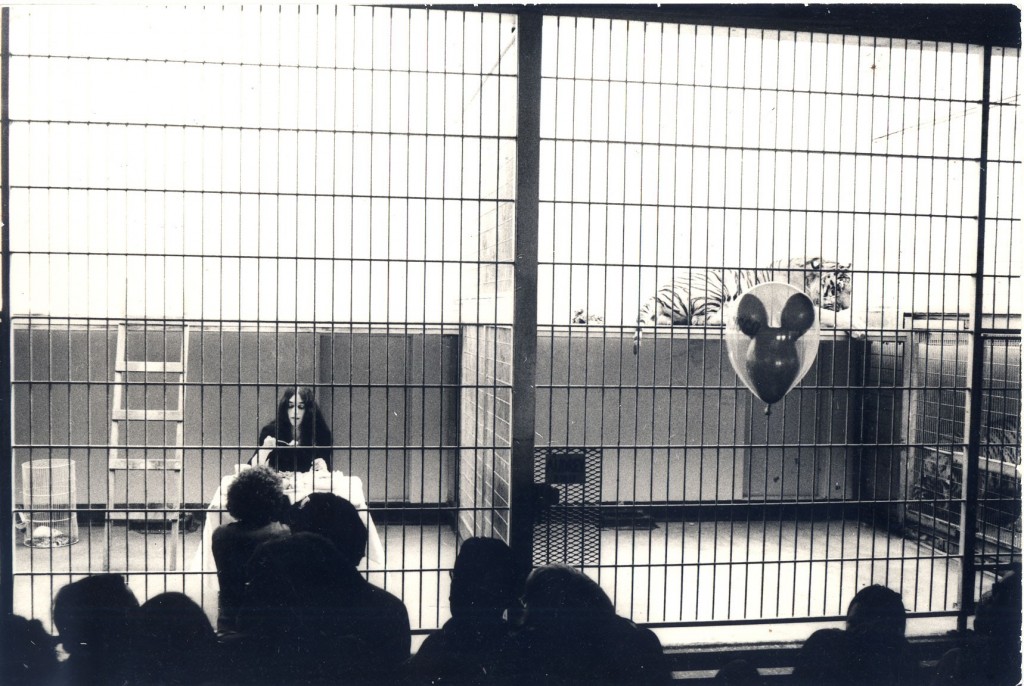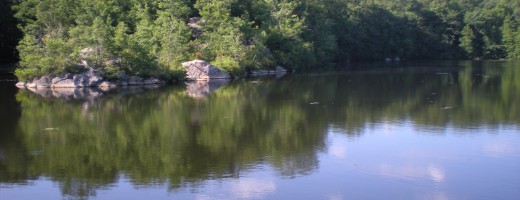Two New Art Museum Shows Feature Early Life Frames Leading To Evolution Of A Living Library
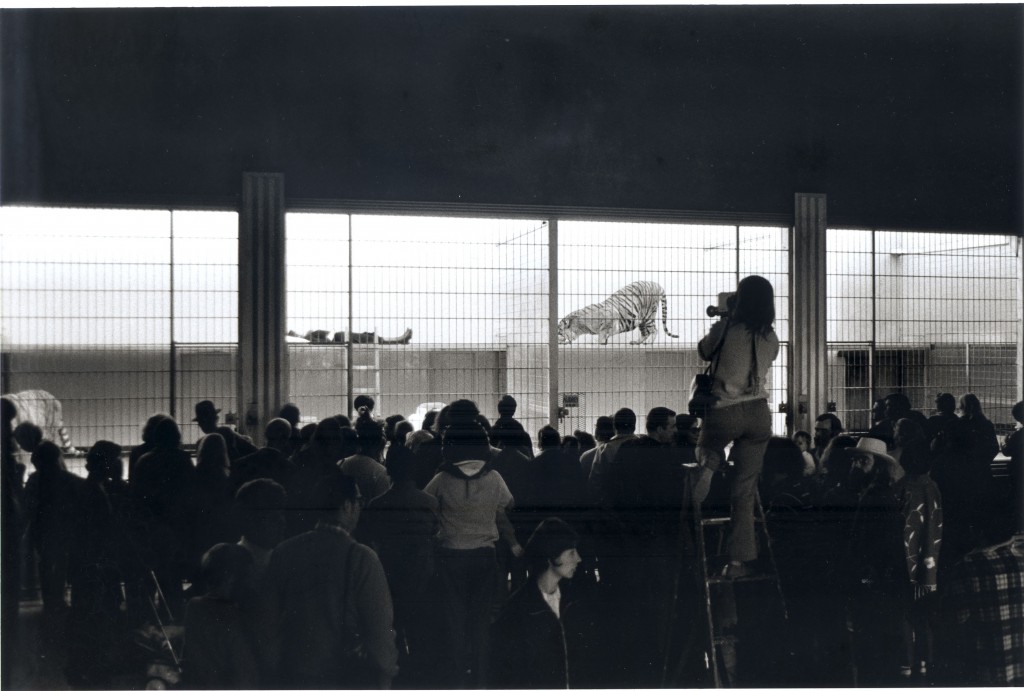 Early performance, environmental, and public practice art by Bonnie Ora Sherk is being featured in two simultaneous art museum exhibitions in Southern California, at the Los Angeles Museum of Contemporary Art (MOCA) and Orange County Museum of Art (OCMA) as part of The Getty's, Pacific Standard Time.
Early performance, environmental, and public practice art by Bonnie Ora Sherk is being featured in two simultaneous art museum exhibitions in Southern California, at the Los Angeles Museum of Contemporary Art (MOCA) and Orange County Museum of Art (OCMA) as part of The Getty's, Pacific Standard Time.
These early life frames evolved to become A Living Library, or A.L.L., for short, with its systemic, place-based framework, strategies, and methodologies for making ecological change in schools and communities.
They also led to the founding of Life Frames, Inc., non-profit sponsor of A Living Library and Branch Living Library & Think Parks in diverse communities, and her work with developing multiple opportunities for the Islais Creek Watershed, such as the Bernal Heights Living Library & Think Park Nature Walk To Islais Creek, which includes the great potential for day-lighting portions of the Creek, among other features and elements.
There are many wonderful synchroniscities that occurred when this early work was being made, while others continue to emerge, and are still being created and discovered today !
MOCA - Under The Big Black Sun
Curated by Paul Schimmel
On view at MOCA, featured in Under The Big Black Sun, is the artist's 2005 multimedia installation on Crossroads Community (the farm), a pioneering, collaborative, hands-on, urban agriculture, environmental education and multi-arts community center, that began in 1974, and nonchalantly incorporated a major freeway interchange and inspired the transformation of close to 7 acres of disparate land fragments into a new city farm and park. The Farm, as it was affectionately known, was also one of the first Alternative Art Spaces in the country.
Bonnie Ora Sherk was the Founding Director and President of the non-profit she set up (1974-80), to reconnect the land fragments and residents of the four communities severed by the 101 Freeway Interchange, (Mission, Bernal Heights, Potrero Hill, Bayview) with each other, and diverse species of plants and animals. She saw The Farm and the adjacent freeway as a dyptych, and created a conscious juxtaposition of non-mechanized nature in relation to the technological monolith of the freeway.
The site is also at the convergence of three hidden Creeks - the Islais, Precita, and Serpentine (the northernmost frame of the Islais Creek Watershed that is she is still working with). The original drawing and plan for The Farm, and the land, was to incorporate the Creek water into the new park and develop ponds and windmills, creating an ecological, agricultural, and bucolic landscape. Many lush gardens were created by school children and adults, including gardens alongside, and in the middle of, the 101 Interchange, which at the time, was a safer and healthier place than today.
Children from over 75 schools in the area came as part of their school day, after school, and weekends, to the The Raw Egg Animal Theatre (TREAT), at The Farm, to have experiential involvement in nature and the arts, and visit the farm animals who lived there.
Below is Bonnie Ora Sherk's original drawing, the first proposal for The Farm, made in 1974. Its frayed edges are due to her carrying it over many years, rolled up, under her arm, to show mayors, supervisors, city and state agency heads, community groups, and others about the potential to acquire the property and invest in its future. The resulting park there today, is called, Potrero del Sol, filled with community gardens and multiple, adjacent, artists' live-work studios, all a reminder of The Farm's legacy.
Click links to view video on The Farm and original text by Bonnie Ora Sherk from 1977:
Video: Crossroads Community (the farm) - Excerpt from Evolution of Life Frames © 2002 Bonnie Ora Sherk
Text: Crossroads Community (the farm) - © 1977 Bonnie Sherk
A Book of the Exhibition is available.
OCMA - State of Mind: New California Art Circa 1970
Curated by Constance M. Lewallen and Karen Moss
The Sitting Still Series and Public Lunch, are currently on view at the Orange County Museum of Art, in Newport Beach, as part of California State of Mind: New California Art ca. 1970.
Sitting Still 1, in which the artist inserted herself as a seated human figure dressed in an evening gown into a found environment of garbage, water, and an overstuffed armchair adjacent to a freeway construction site, is considered by her now, to be her Watershed Piece.
Although not apparent at the time, (she thought she was merely demonstrating how a seated human figure could very simply transform the environment by facing an "audience" of people in slow-moving cars), she was actually facing her future: the site of what would become The Farm, and the 101 Interchange and Cesar Chavez Street, both comprising the northernmost frame of the Islais Creek Watershed. She was also sitting in water from the Islais Creek that had collected due to the 101 Freeway Interchange being built.
She says about this work: "For me, this is an extremely profound piece and addresses the deep power of art and water, and its spiritual dimensions."
After performing Sitting Still 1, the artist took the idea of the seated human figure, and moved with an armchair to diverse urban environments: Mission & 20th Streets; Market & Church Streets; California & Montgomery Streets; Bank of America Plaza; Golden Gate Bridge; and various Indoor/Outdoor Cages at the San Francisco Zoo.
These works culminated in the Public Lunch, in which the artist had a human meal during the public feeding time for the lions and tigers in the Lion House at the San Francisco Zoo. As she says about this work:
"Public Lunch, was the culmination of the Sitting Still Series, which initially began as an exploration of the nature of performance, and demonstrated how a seated human figure could transform the environment by simply being there, although, as it turns out, Sitting Still 1 was much, much more.
Public Lunch was a seminal piece for me. During the course of the performance, I paced, ate my human meal, climbed up the ladder to the platform above, wrote what I was thinking and feeling (on Waldorf Astoria stationary), lay down, and rested. As I was lying down, gazing through the beautiful skylight above, viewing the clouds and birds flying overhead, the tiger in the adjacent cage, got up on his haunches and peered over at me. I thought, "This tiger is perceiving me; he is looking at me. What is he seeing ? What is he thinking ? What Is he feeling ?"
This was a profound experience to think about the potential of another creature's intelligence, perception, feeling states, and communications.
In the cage with me at the Zoo, was another cage with a white rat in it. I brought that cage and animal within, to demonstrate, a cage, within a cage, within a cage.... Who is in the cage ?
As a result of the tiger's actions, I decided to bring the white rat back to my studio. I created a pristine, elegant environment for her. Between two pillars in the space, I built a "Rat Run", with sod at the bottom and wire mesh on the sides. But, I left it open at the top, so the rat could leave if she chose to. She decided to stay, and I named her "Guru Rat". She was the first animal I lived with, and gradually introduced other species into the environment and studied their behavior and interactions with each other.
At the time, the field of ethology, or the study of animal behavior was new; there was very little literature to read and study. But, I learned tremendously, by doing and creating experiences. The animals were performers, as was I; beings in our own right. This work led me to understand ecology and natural systems, which at the time, was not popular, well-known, and part of the zeitgeist, as it is today.
This work eventually led to the creation of The Farm and The Raw Egg Animal Theatre. I was determined to create a situation where people could learn about, and appreciate the natural intelligences of other species. I saw this as a direct analogy to, and metaphor for, issues of racism, sexism, and child abuse."
These works and the exhibition will travel to UC Berkeley Art Museum next year, and thereafter to the Belkin Gallery, University of British Columbia, B.C., and Site Santa Fe in New Mexico. Public Lunch will also be featured in an exhibition at the Smart Museum at the University of Chicago next year.
A Book of the Exhibition is available, published by University of California Press

